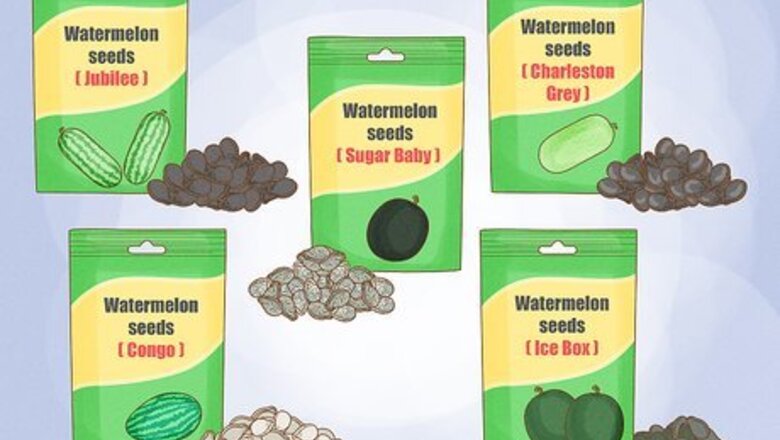
views
Getting Ready to Plant

Choose the variety of watermelon you want to grow. These fruits come in sizes ranging from 3 pounds to over 70 pounds (1.3kg to 32kg), and with either red, orange, or yellow flesh. Jubilee, Charleston Grey, and Congo are large, cylindrical varieties, while Sugar Baby and Ice Box are two smaller, globe shaped types. Decide whether to plant watermelon seeds or transplants. Watermelon seeds need to germinate at a temperature over 70 degrees. If you live in a cool climate, it might make sense to start them indoors a few weeks before the last frost, so you'll be able get the seedlings underway at the beginning of the growing season. Otherwise, plan to plant the seeds directly in the ground well after the last frost, when the temperature is holding steady at above 70 degrees. Watermelon seeds and transplants are available at nurseries in early spring.
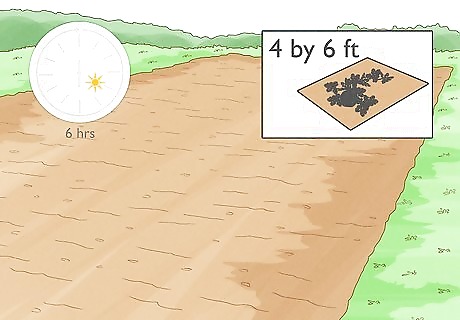
Choose a planting location. Watermelon plants need a minimum of 6 hours of sun every day. They produce large vines that spread and take up a lot of space; plan on allotting a 4 by 6 foot plot for each plant, unless you're planting a mini-watermelon variety.

Till the soil. Use a tiller to work the soil for the beds thoroughly, breaking up large clumps of packed earth. Remove any vegetative matter or deeply incorporate it into the soil. Watermelons like loamy, fertile, well-drained soil. To determine whether your soil gets good enough drainage, take a look at it after a heavy rain. If you see puddles in the dirt, the soil isn't draining well enough. To further enrich the soil, till compost into the top of layers. Watermelons grow best in soil with a pH of 6.0 to 6.8. Test the pH of your soil and determine whether the levels are appropriate for watermelon plants. If not, you can change the balance by adding compounds available for purchase at a plant nursery.
Planting the Watermelon Plants
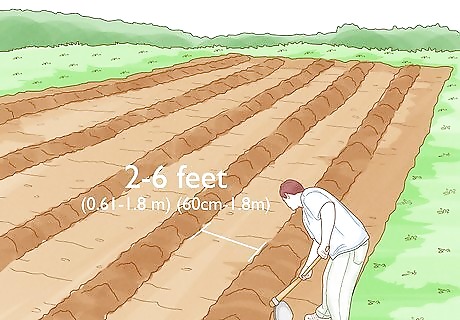
Create mounds. Using a tractor or hoe, form mounds of earth (hills) to plant seeds in. Space these 2–6 feet (0.61–1.8 m) (60cm-1.8m) apart, depending on the amount of space you have. Building the soil up at individual planting locations helps assure that the soil is loose enough for the roots to grow, allows oxygen to each them with ease, and lets excess moisture drain away from direct contact with the roots of your plants. It also helps to conserve available moisture in dry weather.
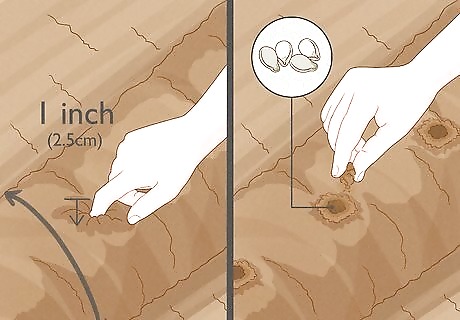
Plant the seeds. Form a flat, slightly concave surface on the top of the hill, then poke three or four holes in the soil with a tool or your finger, about 1 inch (2.5cm) deep. Place one to four seeds in each hole, then rake the dirt flat over the top of the seeds, and lightly press the soil to pack it sufficiently to keep the moisture from quickly evaporating around the seed.
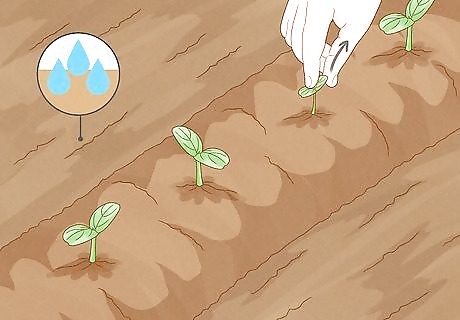
Watch for sprouts to appear. The seeds should germinate and plants will emerge in about 7-10 days, depending on the soil temperature and the depth they are covered when planted. Keep the soil moist around the seeds during the germination period; water close enough so that the water reaches the small roots forming. When the seedlings grow, thin to the two strongest, to give the strong one room to grow. Don't let the soil dry out; you should water at least once daily.
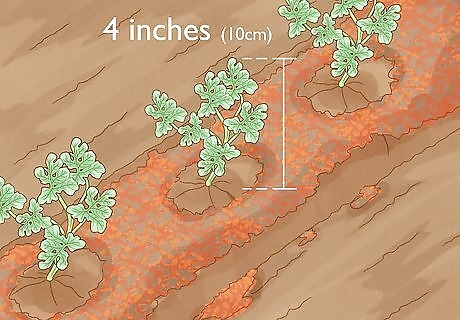
Mulch each hill with a suitable material after the plants have reached a height of about 4 inches (10cm). You can choose pine straw, lawn fabric, or compost. Try to apply the mulch as close to the plants as possible to help prevent weeds, to retain moisture, and to keep the soil from being overheated from direct sunlight around the shallow, new roots. Another option is to lay black landscaping fabric or plastic cloth down after you have made the hills, and then cut holes on top of each hill where you will plant seeds. You can also lay mulch on top of the cloth. This method helps to retain soil moisture and keep weed pressure down.
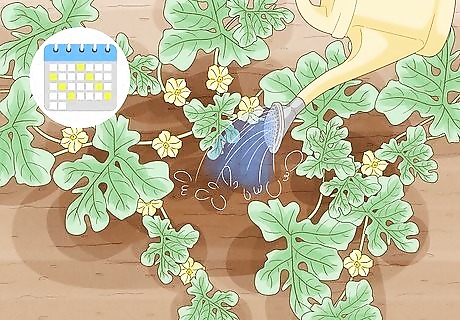
Water less when the flowers bloom. After the flowers bloom, water approximately every 3 days if dry. However, don't over-water, as watermelons have a low water requirement. Keep the foliage and fruit dry. You can place fruit onto a clean piece of wood, large smooth pebble, brick, etc. On very hot days, the leaves will probably wilt even in moist soil. If this limpness can still be seen in the evening after a hot day, water deeply. Sweetness in watermelons can be increased by holding off watering for a week prior to harvesting. However, don't do this if it causes the vines to wilt. Once that crop is harvested, restore the usual watering to enable the second crop to come through well.

Weed regularly. Be sure to weed around the base, along and ahead of the vines. Maintaining a thick layer of mulch around the plants can also help to keep weeds down.
Harvesting the Watermelons
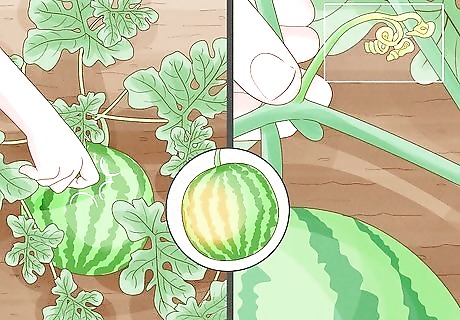
Make sure they're ready. Under perfect conditions, watermelons will mature to full sweetness in about four months of warm weather. Harvesting them before they're ready will result in less flavorful watermelons. To test the ripeness of a watermelon, thump it. A dull noise sounding back means that it has ripened. Also, check the underside––it is ready when it has turned from white to pale yellow. The curly tendril near the watermelon's stem should also be dried out when it's ready to harvest.
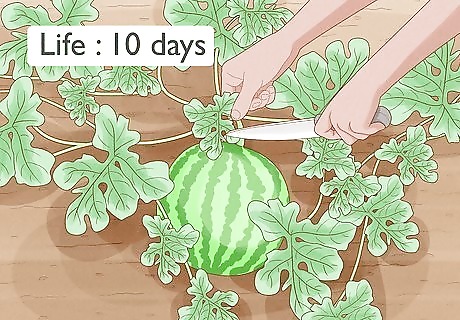
Cut the watermelons from the vine. Use a sharp knife or garden shears to cut the watermelons cleanly from the vine near the fruit. Freshly harvested watermelons will keep for about 10 days.




















Comments
0 comment